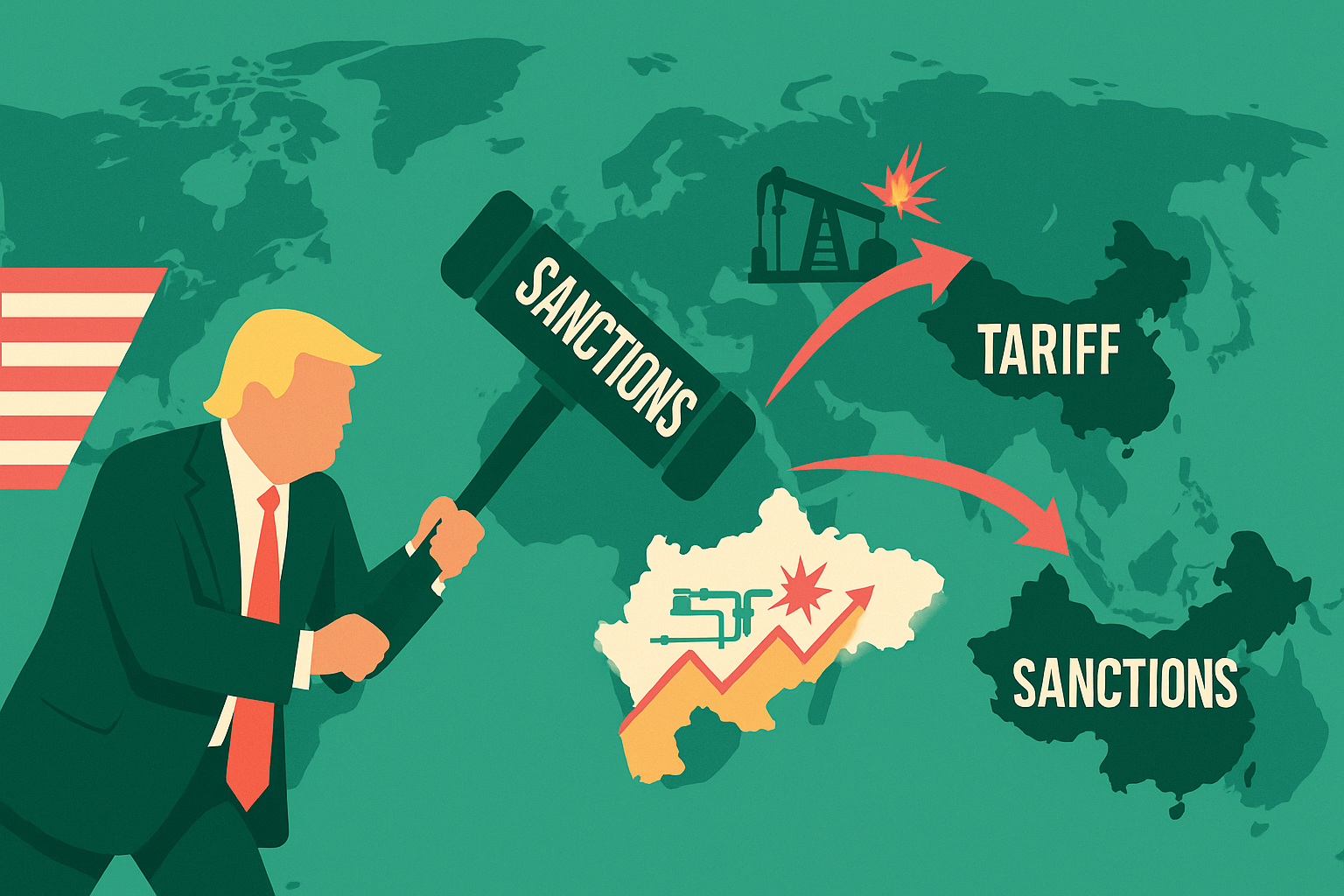August 2025 | By a Professional Economist
Executive Summary
The United States is entering a new phase in its sanctions strategy against Russia. Moving beyond financial asset freezes, Washington is now targeting the very core of Russia’s economic lifeline—energy exports. This shift includes sweeping sanctions on Russian oil, gas, and uranium sectors, and a bold move to pressure third-party countries like India and China through secondary sanctions and punitive tariffs.
This report dissects the evolving U.S. sanctions regime in 2025, covering:
- The legal framework and policy architecture
- Targeting of the Russian energy sector
- The emergence of secondary sanctions
- Trump administration’s dual-track strategy of pressure and diplomacy
- Key economic implications for global trade and monetary systems
Legal Foundation of U.S. Sanctions Policy
The current U.S. sanctions regime is grounded in Executive Order 14024, originally issued in 2021 under the Biden administration and renewed in 2025. This declaration of a national emergency allows the Treasury Department’s Office of Foreign Assets Control (OFAC) to blacklist Russian individuals, entities, and sectors involved in “malign foreign activities.”
In January 2025, OFAC expanded its sanctions list to include:
- Major Russian energy firms (e.g., Gazprom Neft, Surgutneftegas)
- Russian central bank affiliates
- Maritime transport and oil tanker operators
- More than 400 entities and individuals
The Energy Sector as the New Battleground
Energy is the foundation of Russia’s war chest—oil, natural gas, and uranium exports account for over 50% of federal revenues. Recognizing this, the U.S. is now:
- Prohibiting the provision of energy-related services to Russia
- Restricting shipping, insurance, and financing of Russian crude transport
- Pressuring global buyers to reduce or eliminate Russian energy imports
These sanctions are designed not just to degrade Russia’s military capacity, but to restructure global energy flows and reduce Moscow’s influence in international markets.
Secondary Sanctions and Global Ramifications
The “Sanctioning Russia Act of 2025”
A bipartisan bill introduced in Congress grants the president the authority to impose up to 500% tariffs on countries that continue importing Russian oil, gas, refined petroleum, or uranium.
Key provisions include:
- Mandatory reporting of energy trade with Russia
- Discretionary tariffs on nations ignoring the embargo
- Full alignment with allies (EU, UK, Japan) to enforce sanctions compliance
Impact on India and China
India is already facing a 25% punitive tariff on its exports to the U.S. due to continued Russian oil purchases. China is also under scrutiny and may face similar or even harsher measures.
This escalation raises the risk of fragmenting global trade and accelerating the shift toward alternative trade blocs and currencies (e.g., CNY, INR, or even ruble-based settlements).
Trump’s Dual Strategy: Pressure and Negotiation
Former President Donald Trump, now in his second term, is pursuing a twin-track approach:
- Maximum Pressure: Trump has declared an August 8 deadline for Russia to engage in meaningful peace negotiations or face 100%+ tariffs on energy trade partners.
- Diplomatic Engagement: A special envoy, Steve Witkoff, is scheduled to visit Moscow to explore peace terms while signaling serious consequences if talks fail.
This approach aims to avoid direct confrontation while leveraging economic levers to shape geopolitical outcomes.
Global Economic Implications
| Aspect | Implication |
|---|---|
| Oil Prices | Increased volatility due to restricted supply and elevated geopolitical risk |
| Inflation | Energy-driven cost-push inflation, especially in Asia and Europe |
| Monetary System | Growing push for de-dollarization as nations seek alternative settlement mechanisms |
| Sanctions Fatigue | Western industries are showing signs of resistance to long-term decoupling from Russian resources |
These trends point toward a new multipolar economic order, where sanctions themselves become a tool of systemic realignment—not just punishment.
Conclusion: Sanctions as a Currency of Geopolitical Influence
The U.S. sanctions strategy has evolved from a defensive policy into a proactive geopolitical instrument. By weaponizing energy flows and leveraging secondary sanctions, Washington aims to constrain Russia’s economic engine while reshaping the rules of international commerce.
However, this strategy is not without risks:
- It may erode the dominance of the U.S. dollar
- It may accelerate the formation of parallel trade and currency systems
- It may lead to retaliatory protectionism and trade fragmentation
Ultimately, the success of these sanctions will depend not just on economic pressure, but on America’s ability to lead a coalition of willing nations in enforcing and sustaining a shared economic vision.


